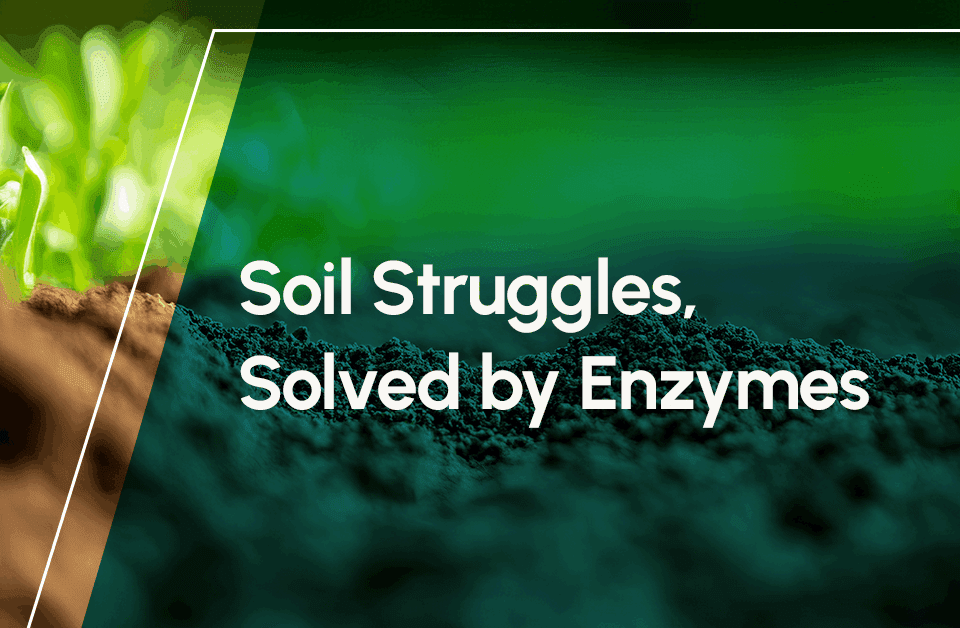
Peptide Potential

Elemental Enzymes Announces Partnership with AgIdea
Lack of access to sufficient water, or drought stress, is a top stressor for crops globally. Drought is classified as an abiotic stressor, alongside environmental factors such as extreme temperature and ultraviolet exposure.
Realizing how vital a role water plays in plant development might lead to visions of a cornstalk drawing up gallons of water through its roots to inject straight into leaves and kernels — but how the plant uses moisture is a little more complicated.
Deanna Smith, Global Product Manager for Biochemistry Technology for Elemental Enzymes, notes that plants only use about 5 percent of their water intake for vegetative or reproductive growth. Up to a whopping 95 percent is lost through transpiration, a process where the plant loses water when exchanging oxygen for carbon dioxide to fuel photosynthesis.
She refers to this loss as “an unfortunate compromise” necessary to plant growth, a process most try to restrict to cooler parts of the day to retain water. If a plant hasn’t manufactured enough osmoprotectants — compounds that facilitate water uptake and storage — then it runs the risk of stunted development.
“If it has to constantly replenish or repair itself, then the crop can’t spend that energy for yield,” Smith explains. “Therefore, the more water you can hold in the plant, the more it can use that water efficiently and keep those plant structures going strong, creating yield and, for the grower, more of a return on their investment.”
Supplemental protectants
Plants make osmoprotectants from amino acids such as proline, sugars, carbohydrates, and compounds like betaine. In retaining water, these help protect cell structure and function. A plant’s hardiness is partly determined by how many osmoprotectants it can build. For instance, cacti are among the most prolific at this, which explains how they can thrive in arid environments. Nearer to the other end of the spectrum are many horticultural plants. Row crops such as corn, sorghum, soybeans, and wheat fall somewhere in between.
“We have sort of bred the toughness out of vegetables and citrus, because we put them in good soil, and we provide them water regularly, so they no longer have to produce as many osmoprotectants on their own,” says Smith.
Elemental has pulled from naturally derived biochemistries to design foliar drought mitigants for a broad spectrum of horticultural and row crops, depending on their level of need. They focus naturally occurring amino acids and compounds to provide exogenous osmoprotectants to the plant to supplement its own, giving it access to more moisture. This means the plant uses less energy fighting drought stress and instead directs it to facilitating growth and development.
In turn, biochemistries help prevent the breakdown of critical proteins and enzymes within the plant due to reactive oxygen species (ROS). While a certain amount of ROS is a normal side effect of the plant’s metabolic process, stressors including too little water can lead to higher concentration of these free radicals, which then attack a plant’s cellular stability.
Elemental’s mode of action helps a crop:
- Retain more water
- Use water more efficiently
- Stabilize its own structure
R&D strides against drought
Elemental’s current drought mitigation products are foliar treatments uniquely formulated to combine osmoprotectant building blocks with a surfactant and potassium. The surfactant enables full coverage of the plant, and potassium helps cells draw in more water. These are generally applied during a crop’s mid-vegetative or early reproductive stages, when Smith says plants are more sensitive to the effects of drought stress.
Elemental has also expanded formulations in the long-term research and development pipeline for addressing drought mitigation. Smith notes that Elemental scientists are working on seed treatment and planter-box application options in which the technology would lie dormant until the plant needs it to fight drought stress. This prevents the grower from having to decide when to apply a foliar product. While Elemental’s current drought mitigation products are biochemistry-based, the company does have an enzyme-based treatment in early development.
As with other Elemental products, these drought mitigation formulations are easy to apply and can be applied with other products such as pesticides or fungicides. They are naturally formulated and are shelf-stable for at least 30 months. Researchers are currently testing the products in real-world conditions to be able to verify shelf life to three or even four years.
“Farmers may only use one biochemistry or other naturally-formulated input alongside their conventional chemicals, depending on their greatest need,” Smith explains. “If it’s to address a nitrogen-fixing issue for soybeans, for example, they might use a biobased rhizobium; in a dry area, they might instead go for a drought mitigation product.
“Whatever stress mitigation a grower may need, we want Elemental to be their top choice.”




